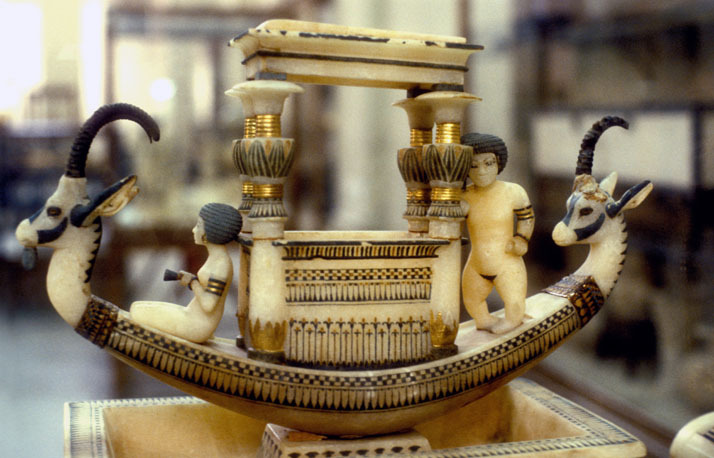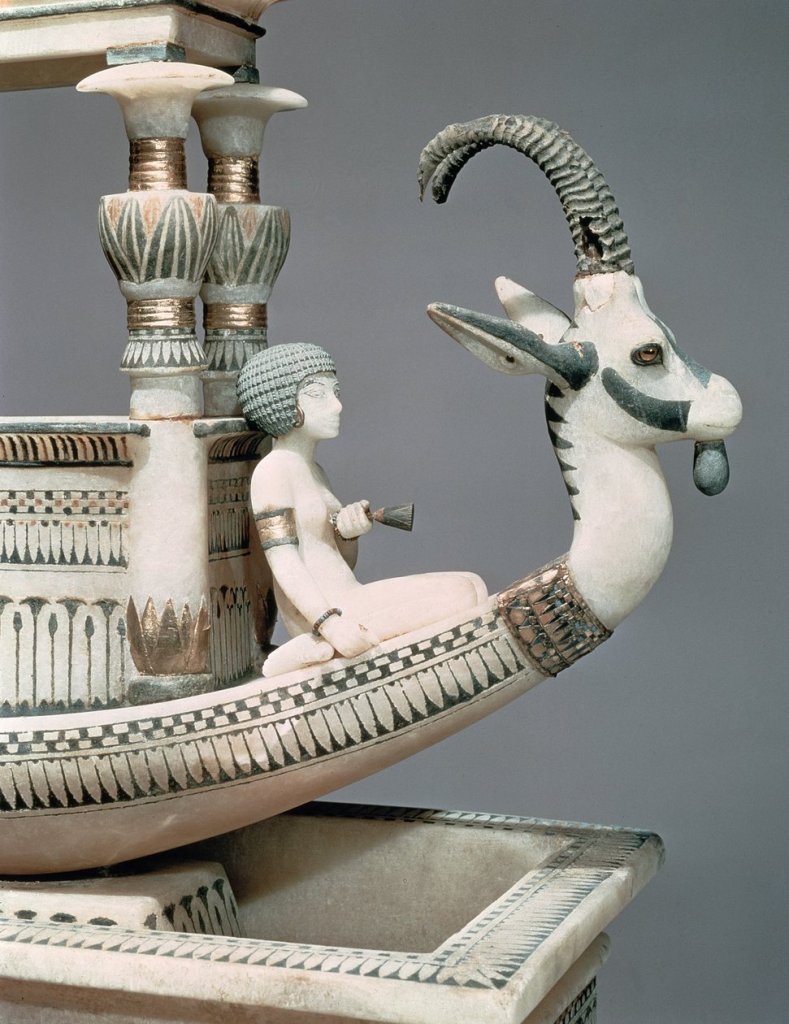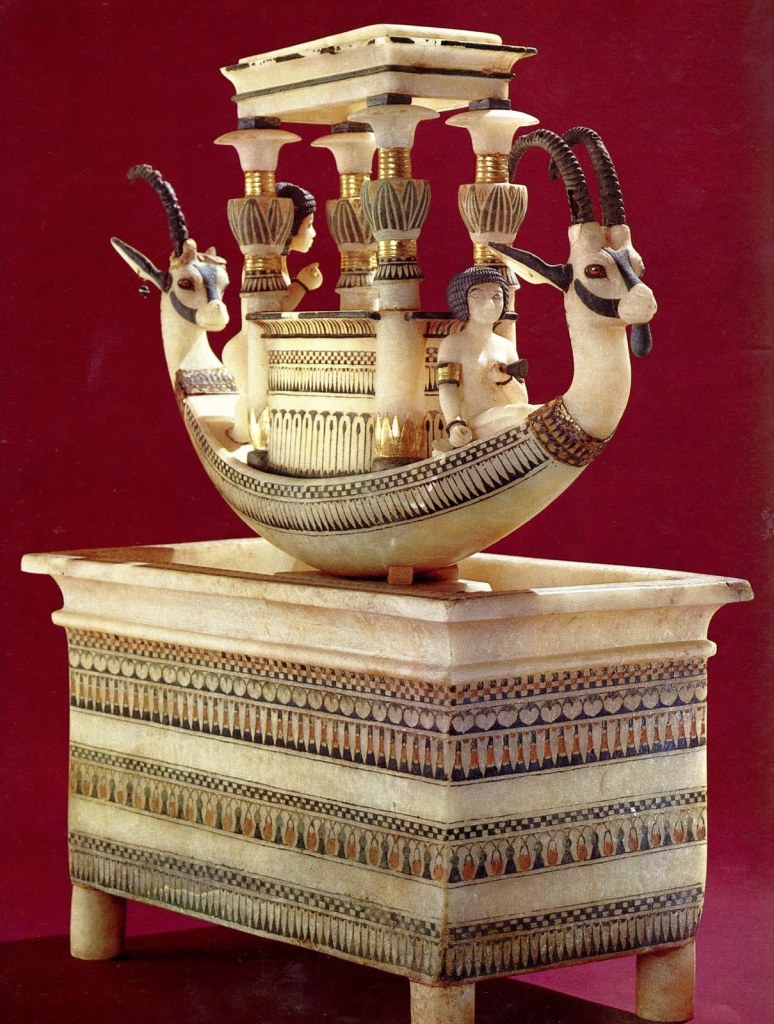Introduction
The Alabaster Boat of Tutankhamun is one of the most exquisite artifacts in the treasure-filled tomb of the boy king, discovered by Howard Carter in 1922. Supported by a square, pool-shaped foundation, the purpose of this alabaster sculpture remains unclear, though it is speculated to have been a ceremonial or decorative object.
The Discovery and Function
This remarkable piece was found in the annex of King Tutankhamun’s tomb, wrapped in flower garlands. While its exact use is unknown, experts suggest that it could have served as an unguent bottle, a perfume holder, or a centerpiece for adornment during festivities. Carter, who found no residue of oil or unguent, theorized that the basin may have been filled with water to create the impression of a boat floating on the surface. This elegant interpretation reflects the artistry of the late 18th Dynasty.

Detailed Description of the Alabaster Boat
- Boat Design: The bow and stern of the boat are intricately carved to resemble ibexes. The ibexes face the same direction, with pierced ears, and one retains an earring. Their horns are actual ibex horns, while the boat’s hull and base are etched and painted in matching patterns. The ibex on the prow even retains its distinct beard, highlighting the attention to detail in the craftsmanship.
- The Stern’s Helmsman: At the boat’s stern, a naked dwarf figure holds a pole, likely serving as the helmsman. His appearance is adorned with armbands, wristbands, and a wig, adding a human element to the elegant sculpture.
- The Female Figure: The bow of the boat features a beautifully carved depiction of a seated female figure under a canopy. She is adorned with golden earrings, an armlet, and a bead bracelet. Her wig, crafted from grey stone, and the stained ivory lotus she holds in her left hand emphasize the luxury and refinement of the artifact. The canopy supported by four elegant columns further enhances the piece’s ceremonial grandeur.

Symbolism and Artistic Elements
The Alabaster Boat not only reflects artistic brilliance but also encapsulates a deeper symbolic significance. The ibex horns, genuine in nature, combined with the intricate carvings of the animals and the female figure, may suggest connections to both the divine and the natural world. The etched eyes on the ibexes, along with the boat’s throne names and inscriptions, pay homage to King Tutankhamun and his wife, indicating a strong royal association.

Historical Context
This artifact dates back to the New Kingdom, specifically the late 18th Dynasty during the reign of Tutankhamun (ca. 1332-1323 BC). It was found in the tomb of the young king in the Valley of the Kings, and today, it resides in the Egyptian Museum in Cairo (JE 62120). Its blend of artistic and functional elements showcases the craftsmanship and ceremonial traditions of the ancient Egyptians during one of the most prosperous periods of their history.
Conclusion
The Alabaster Boat of Tutankhamun is more than a stunning work of art—it is a window into the ritualistic and symbolic practices of ancient Egypt. Though its true purpose remains a mystery, its intricate design and masterful execution continue to captivate historians, archaeologists, and art lovers alike, making it a timeless testament to the grandeur of ancient Egyptian civilization.

